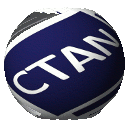Directory info/maad
readme.txt
505 W GRAND BLVD 206
CORONA CA 91720 2121
19 DECEMBER 1992
Dear reader:
One problem which recurs again and again in the engineering environment is
centered around the so-called least-squares curve fit. The coefficient of
linear correlation, r, is between -1 and 1. When r is close to +1 or -1,
good correlation is indicated; a value of r close to 0 means little or no
correlation. Some software outputs a more quantitative measure of goodness
of fit. Two factors are used: (1) the number of points, N, and (2) the
value of the correlation coefficient, r. The attached documentation and
computer programs explain this quantative measure of fit and provide work-
ing models.
The graphical output of many commercial statistical packages does not in-
clude the construction of error bars. This shortfall is closely tied to
the problem of goodness of fit. If the line of best fit misses a large
proportion of the error bars or if it misses one or more significantly,
then there is little or no correlation. This is true despite a value of r
different from zero---if the number of data points, N, is small. The doc-
ument provides a vehicle for the correct graphical display of statistical
data.
It is hoped that the user of this document and the computer programs will
be spared from the need to constantly "re-invent the wheel."
Harry A. Watson, Jr.
(909) 737-3958
maad – Mathematical Approximations and Documentation
A document describing the parametrization of least-squares curve fitting, and showing how (using PiCTeX) to display error bars.
| Package | maad |
| Version | 1994-09-02 |
| Licenses | Public Domain Software |
| Maintainer | Harry A. Watson, Jr |
| Topics | Documentation |
